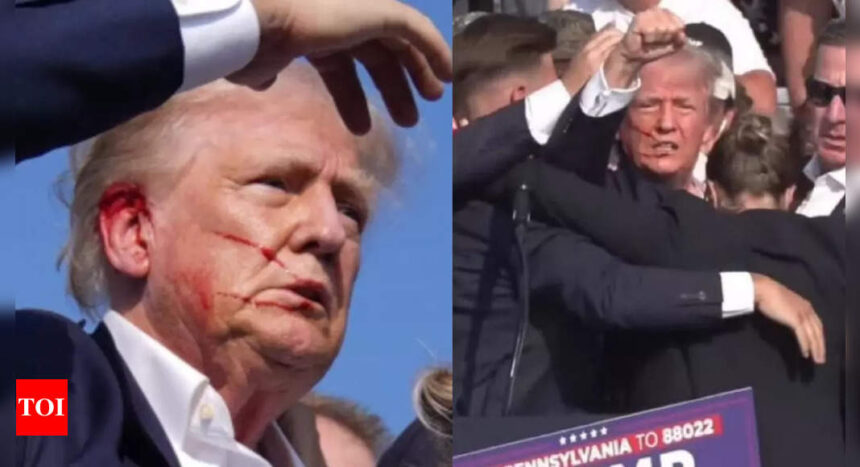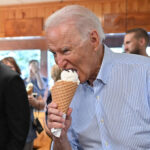The ongoing investigation into the incident has highlighted multiple failures that allowed gunmen to breach security and open fire on stage as Trump spoke:
- Pre-event research and monitoring: Security experts point out that there are fundamental failures in pre-event research and real-time monitoring. Thomas Matthew Crooks, a 20-year-old gunman, can occupy elevated positions, such as rooftops, without being detected. This suggests that the security team did not assess potential threats in advance or monitor the area effectively during the event.
High ground control : Retired Bureau of Alcohol, Tobacco, Firearms and Explosives (ATF) Agent Jim Cavanaugh said he was surprised that the gunman could hold the position he was appointed to. He noted that in his experience, every high place is usually taken by a security team or the local SWAT police to make sure no one can take it from the high position.- Perimeter security: The security perimeter around the event was breached. Although the participants must pass security checkpoints, including magnetometers, the gunman can avoid this check and reach a position from which he can fire.
- Real time response: At
Secret Service , which is the lead agency responsible for Trump’s safety, appears to have been unaware of the armed individual on the rooftop until he opened fire. FBI agent Kevin Rojek described the number of shots the attackers were able to fire as “shocking”, pointing to the failure to identify and neutralize the threat in time. This indicates a breakdown in the agency’s threat assessment and real-time monitoring capabilities. - Eyewitness accounts: Witnesses reported seeing a man armed with a gun crawl onto a roof near the rally, within walking distance of where Trump was speaking. Despite the efforts of the participants to signal security, the gunman was able to occupy this elevated position without being detected. Security experts say securing high-profile positions is an important part of protecting politicians at public events, but this threat appears to have been missed. It is also not clear whether the warning was carried out by security officials.
- Lack of transparency and accountability: The Secret Service did not have a representative at an initial press conference after the incident, raising questions about the agency’s transparency and willingness to address the issue.
security failure .
Pennsylvania State Police Lt. Col. George Bivens, however, defended the Secret Service, stating that it is “really difficult” to secure open spaces against any threat. He emphasized that the investigation will help identify areas for future improvement.
What happens next?
- Investigation and accountability: The FBI has confirmed that there will be a full investigation into the incident to determine what happened and how the shooter was able to get into the position. This investigation could take months and could lead to changes in security protocols and procedures. Mike Johnson, the speaker of the Republican-controlled U.S. House of Representatives, said a panel in the chamber would call officials from the Secret Service, Department of Homeland Security and FBI for meetings.
- Congressional Question: Senior Republican politicians have demanded answers from the US Secret Service. The agency’s senior leaders are facing congressional questions. The House oversight panel called Secret Service Director Kimberly Cheatle to testify on July 22.
- Future security measures: The incident highlights the need for stronger security measures, especially at open events. Improving perimeter security, real-time monitoring, and communication between security personnel and participants will be essential to prevent similar incidents in the future.
After this assassination attempt, the Secret Service faced strict scrutiny of its protection protocols and ability to guard high-profile political figures, especially during public events. The security mishap that allowed gunmen to open fire on Trump highlights the need for a comprehensive review of the agency’s practices and a renewed commitment to ensuring the safety of those under its protection.
Security measures at Trump rallies
- During most of Trump’s campaign stops, local police assisted the Secret Service in securing the venue. Agents from other agencies within the Department of Homeland Security, such as the Transportation Security Administration, sometimes help.
- Many of Trump’s demonstrations feature thousands of spectators, take place in the open air and last for hours.
- Before the event, agents scanned the area for bombs or other threats, and Trump always arrived in a surrounded motorcade.
- Law enforcement officials usually set up barriers as a perimeter, and require all participants to pass through metal detectors to enter the premises. Armed protective agents search all participants’ bags and even wallets. Many rallygoers are patted down by hand.
- Paul Eckloff, a former Secret Service agent who is retiring in 2020, said agents will survey all rooftops with line-of-sight first. “This guy hides himself until he’s a threat, or he’s not a threat until he reveals his weapon,” Eckloff said.




